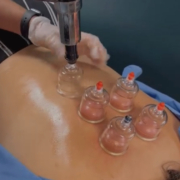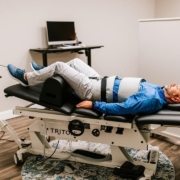The Ancient Art of Cupping: Exploring its Healing Benefits
In recent years, holistic health practices have gained popularity as people seek alternative ways to enhance their well-being. One such practice that has piqued curiosity and garnered attention is cupping therapy. While cupping is by no means new, its resurgence in modern times has sparked interest in understanding its origins, techniques, and purported benefits. In this blog, we’ll delve into the ancient art of cupping, exploring its history and potential healing advantages.
The Origins of Cupping
Cupping is an ancient therapeutic technique with origins dating back thousands of years. Its roots can be traced to traditional Chinese, Egyptian, and Middle Eastern medicine. Historically, practitioners utilized animal horns and bamboo cups as suction devices to stimulate blood flow and remove stagnation from the body. Today, modern cupping typically employs glass or silicone cups, which can be applied using various methods to create a vacuum effect on the skin.
How Cupping Works
During a cupping session, the therapist places cups on specific areas of the body, usually on the back, shoulders, or limbs. The cups can be left in place or moved across the skin to create a massage-like effect. The vacuum created inside the cup pulls the skin and underlying tissues upward, promoting increased blood circulation to the area. This can lead to temporary discoloration and the appearance of circular marks on the skin, which usually fade within a few days.
The Benefits of Cupping
- Pain Relief: Cupping is believed to alleviate muscle and joint pain by improving blood flow to affected areas. It may help reduce inflammation, relax tense muscles, and release toxins that contribute to discomfort.
- Stress Reduction: Many proponents of cupping therapy claim that it induces relaxation and relieves stress. The gentle pulling and massaging sensations during the treatment can have a calming effect on the nervous system, promoting a sense of well-being.
- Improved Circulation: Cupping enhances blood circulation, allowing more oxygen and nutrients to reach tissues and promoting the elimination of waste products from the body.
- Detoxification: The negative pressure of cupping is thought to draw out toxins and metabolic waste from tissues, supporting the body’s natural detoxification processes.
- Enhanced Immune Response: Some studies suggest that cupping may stimulate the immune system, helping the body defend against infections and illnesses.
- Respiratory Benefits: In traditional Chinese medicine, cupping has been used to address respiratory conditions like asthma and bronchitis. The treatment is believed to aid in clearing congestion and promoting easier breathing.
- Skin Health: Cupping can improve skin tone and elasticity by stimulating collagen production and increasing blood flow to the skin, potentially reducing the appearance of cellulite and scars.
Important Considerations
While cupping therapy may offer various potential benefits, it is essential to consider certain factors:
- Professional Expertise: Always seek cupping therapy from a qualified and experienced practitioner who understands the appropriate techniques and safety protocols.
- Individual Response: People may respond differently to cupping therapy, and its effectiveness can vary depending on the condition being treated.
- Contraindications: Cupping may not be suitable for everyone. Individuals with certain medical conditions, skin issues, or bleeding disorders should avoid or consult a healthcare professional before trying cupping.
Conclusion
Cupping therapy has a long history of use in traditional medicine and continues to be embraced by practitioners and patients worldwide. Its potential benefits in promoting relaxation, pain relief, and improved circulation make it an intriguing option for those seeking alternative healing methods. However, it’s important to remember that cupping is just one aspect of holistic health, and individuals should always consider their unique health needs and consult healthcare professionals for comprehensive advice. As we rediscover ancient practices like cupping, we embrace the wisdom of the past and integrate it with modern knowledge to promote a healthier and more balanced life.



